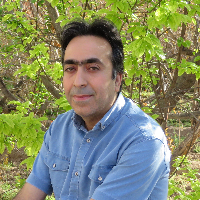Spatial distribution of heavy metals and fractionation in soils around a coal washing factory (Zarand)
Author(s):
Abstract:
Background And Objectives
Environmental pollution by heavy metals has been known as a serious problem associated with industrialization. Due to high stability nature, heavy metals could be accumulated in soils at toxic levels and insert to human food chain. The total concentration of heavy metals can indicate the extent of contamination, but is not usually an accurate indication of the bioavailability, mobility and phyto-toxicity and thus the fractionation procedures have been used to show environmental risks of toxic metals. Heavy metals in soils occurred in soluble, exchangeable, organically bound, oxides bound and residual fractions. There is limited information about bioavailability heavy metals in soils around coal washing factories of Iran. This study was conducted to investigate the distribution of chemical fractions of copper, lead and cadmium in a coal washing factory located in Zarand.Materials And Methods
The study area (Zarand coal washing plant) is located about 70 kilometers from Kerman city (Western Iran). A nested grid sampling scheme was adopted using Google Earth. In this study, 4 areas were selected according to dominant vegetation. Composite soil samples (5 samples per point) were systematically collected from 0 to 30 cm depth. Soil samples were air dried and passed through a 2 mm sieve. For determination of total concentration of heavy metals (Cu, Cd and pb), 20 mL of 5N HNO3 was added to 0.2 g of soil samples and heated for 10 minutes and then kept at room temperature for 24 h. after centrifuge, the concentration of heavy metals was determined using atomic absorption spectrometer. Chemical fractions of heavy metals including acid-soluble/exchangeable fraction, reducible (bound to Fe-Mn oxides), oxidizable (bound to organic matter) and residual fractions were sequentially extracted. After each successive extraction, separation was carried out by centrifugation at 3000 rpm for 30 min. the supernatant was filtered with Whatman 42 filter. The concentration of Cu, Cd and pb in supernatant was determined using atomic absorption spectrophotometer.Results
The results showed that the total contents of Cu, Pb and Cd in 4 areas was higher than the standard range provided by Iranian soil and water office of human environment Bureau, showing the serious pollution of studied heavy metals in soils. Based on Geoaccumulation Index (GI), site 4 were highly polluted by Pb whereas Cu and Cd were in non- polluted to slightly polluted status. Spatial distribution of heavy metals showed that the highest content of Cd, Pb and Cu were found in the northwest and the west direction of factory with agricultural land use showing the alarming status of this area. In all sites, the residual and exchangeable fractions of heavy metals had the greatest and lowest values among other fractions, respectively. The distribution of studied metals (Cu, Cd and Pb) were lined in the order of residual fraction > reducible fraction > oxidizable fraction > exchangeable fraction.Conclusion
According to average concentration presented by soil and water office of human environment Bureau, Cu, Pb and Cd values are in alarming status. The changes in chemical fractions of Cu and Pb following the order of residual> Reducible > Oxidizable fraction > exchangeable. Based on Geoaccumulation Index (GI), the areas were highly polluted by Pb. The results showed that in comparison with Cd and Cu, the main fraction of Pb is deposited in residual fraction in soil. Based on these results, the Cd and Cu are more dangerous than Pb in this region and are capable to transport in food chain. Keywords:
Language:
Persian
Published:
Water and Soil Conservation, Volume:24 Issue: 2, 2017
Pages:
203 to 219
magiran.com/p1744742
دانلود و مطالعه متن این مقاله با یکی از روشهای زیر امکان پذیر است:
اشتراک شخصی
با عضویت و پرداخت آنلاین حق اشتراک یکساله به مبلغ 1,390,000ريال میتوانید 70 عنوان مطلب دانلود کنید!
اشتراک سازمانی
به کتابخانه دانشگاه یا محل کار خود پیشنهاد کنید تا اشتراک سازمانی این پایگاه را برای دسترسی نامحدود همه کاربران به متن مطالب تهیه نمایند!
توجه!
- حق عضویت دریافتی صرف حمایت از نشریات عضو و نگهداری، تکمیل و توسعه مگیران میشود.
- پرداخت حق اشتراک و دانلود مقالات اجازه بازنشر آن در سایر رسانههای چاپی و دیجیتال را به کاربر نمیدهد.
دسترسی سراسری کاربران دانشگاه پیام نور!
اعضای هیئت علمی و دانشجویان دانشگاه پیام نور در سراسر کشور، در صورت ثبت نام با ایمیل دانشگاهی، تا پایان فروردین ماه 1403 به مقالات سایت دسترسی خواهند داشت!
In order to view content subscription is required
Personal subscription
Subscribe magiran.com for 70 € euros via PayPal and download 70 articles during a year.
Organization subscription
Please contact us to subscribe your university or library for unlimited access!



